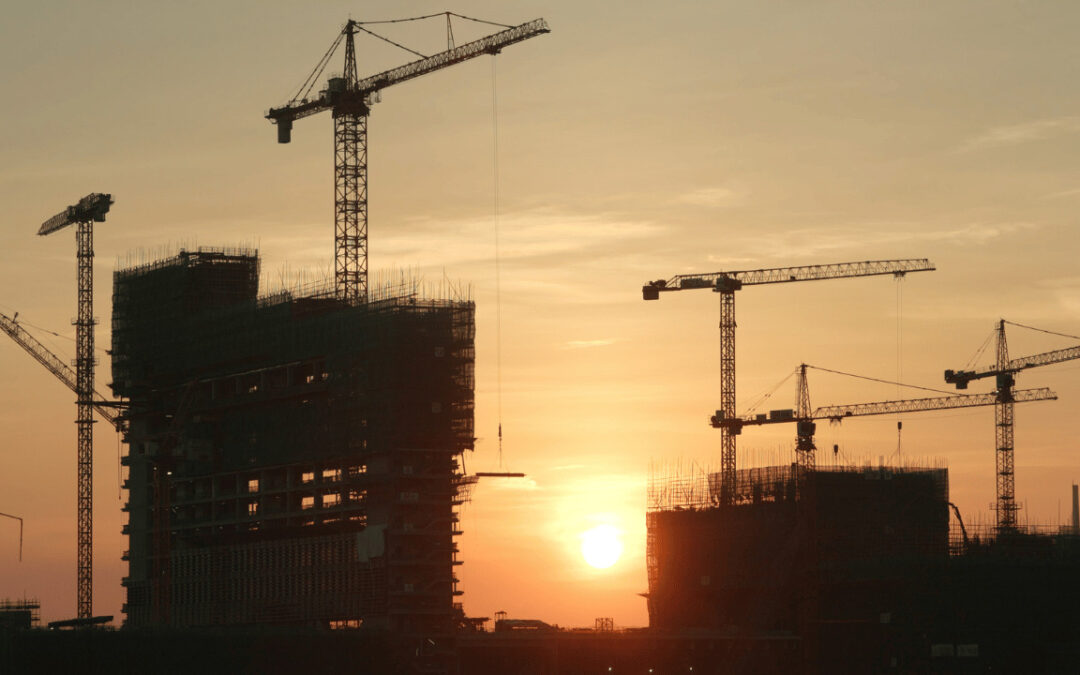( Infrastructure Construction in Pakistan ) When we look around, it’s easy to take for granted the roads we drive on, the buildings we work in, and the bridges we cross. Yet, behind the scenes, there’s a whole world of planning, engineering, and hard work that goes into creating the infrastructure that supports our modern lives. In this article, we’ll take you on a journey through the fascinating realm of infrastructure construction, demystifying the process and showcasing its vital importance.
Premier Architecture Design Services Provider in Pakistan
Table of Contents
1. What is Infrastructure Construction in Pakistan?
Infrastructure construction involves the planning, designing, and building of essential facilities that support our communities. This includes roads, bridges, airports, schools, and even sewage systems. Think of it as the backbone of a city, the unseen force that keeps everything connected and functioning.
2. Planning for a Better Tomorrow
Before a single brick is laid, meticulous planning is essential. Engineers, urban planners, and architects collaborate to create blueprints that take into account everything from traffic flow to environmental impact. It’s a bit like solving a giant puzzle, ensuring every piece fits seamlessly into the bigger picture.
3. The Art of Designing
Designing infrastructure is not just about aesthetics, it’s about functionality and safety. Engineers use cutting-edge software and years of expertise to create structures that can withstand the test of time. It’s akin to crafting a masterpiece that will serve generations to come.
4. Materials: The Backbone of Construction
Every structure relies on the right materials. From concrete and steel to glass and asphalt, choosing the right materials is crucial for longevity and stability. It’s like selecting the best ingredients for a recipe, ensuring the end result is both strong and durable.
5. Skilled Hands and Powerful Machines
The construction site is a symphony of activity, where skilled workers and powerful machines work in harmony. From masons to crane operators, each person plays a vital role in turning blueprints into reality. It’s a testament to human ingenuity and teamwork.
6. Navigating Regulations and Permits
Before construction can begin, a myriad of permits and regulations must be navigated. This ensures that projects adhere to safety and environmental standards. It’s like crossing all the T’s and dotting all the I’s before embarking on a grand adventure.
7. Environmental Considerations
In today’s world, sustainability is paramount. Infrastructure construction takes into account the impact on the environment, striving to minimize harm and even contribute positively to ecosystems. It’s about building with nature, not against it.
8. Budgeting: Balancing Act of Construction
Financing a project requires careful budgeting. Balancing costs without compromising quality is a delicate dance. It’s akin to managing a household budget, making sure every penny is put to good use.
9. Construction Phases: From Groundbreaking to Completion
From the groundbreaking ceremony to the final touches, construction happens in distinct phases. Each step requires precision and coordination, akin to a carefully choreographed dance.
10. Quality Control: Ensuring Durability
Quality control is the guardian of a project’s longevity. Inspections and tests are conducted to ensure that every element meets or exceeds industry standards. It’s like putting a seal of approval on a job well done. ( Infrastructure Construction in Pakistan )
11. Embracing Technology in Construction
In the 21st century, technology plays a pivotal role in construction. From drones for site surveys to advanced machinery, innovation is driving the industry forward. It’s like giving construction a turbo boost into the future. ( Infrastructure Construction in Pakistan )
12. Infrastructure and Economic Growth
Strong infrastructure is the bedrock of economic prosperity. It facilitates trade, creates jobs, and attracts investment. It’s the engine that drives a city’s growth and development. ( Infrastructure Construction in Pakistan )
13. Challenges in Infrastructure Construction
While the rewards are immense, infrastructure construction isn’t without its challenges. Weather, unforeseen obstacles, and tight deadlines can test even the most seasoned professionals. It’s about navigating through adversity to bring a vision to life. ( Infrastructure Construction in Pakistan )
14. Sustainable Practices: Building for the Future
The future demands sustainable infrastructure. From green buildings to renewable energy integration, the industry is evolving to meet the needs of a changing world. It’s about leaving a legacy that benefits generations to come. ( Infrastructure Construction in Pakistan )
15. Conclusion: Building the Foundations of Tomorrow
In every city skyline, in every smoothly paved road, and in every reliable bridge, there’s the story of infrastructure construction. It’s the silent force that shapes our lives, often working behind the scenes, yet its impact is felt by all. So, the next time you cross a bridge or walk down a well-planned street, take a moment to appreciate the marvel that is infrastructure construction. ( Infrastructure Construction in Pakistan )
FAQs
Q1: How long does it typically take to complete a major infrastructure project?
A1: The timeline for a project can vary widely depending on factors like size, complexity, and unforeseen challenges. Major projects can take anywhere from a few months to several years to complete.
Q2: What are some of the key environmental considerations in infrastructure construction?
A2: Environmental considerations include minimizing habitat disruption, managing waste responsibly, and implementing eco-friendly construction practices. Additionally, efforts to conserve energy and water are integral to sustainable construction.
Q3: How does infrastructure construction contribute to economic growth?
A3: Strong infrastructure creates a conducive environment for business, attracts investment, and improves transportation efficiency. This, in turn, leads to job creation and overall economic development.
Q4: What are the most significant challenges faced during infrastructure construction?
A4: Weather-related delays, unexpected underground conditions, and compliance with strict regulations are common challenges. Additionally, coordinating various aspects of construction can be complex.
Q5: How is technology shaping the future of infrastructure construction?
A5: Technology is revolutionizing the industry with innovations like Building Information Modelling (BIM), 3D printing, and the use of drones for surveying and monitoring. These advancements lead to more efficient and sustainable construction practices.



Recent Comments